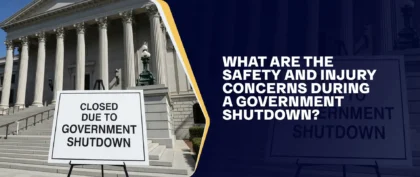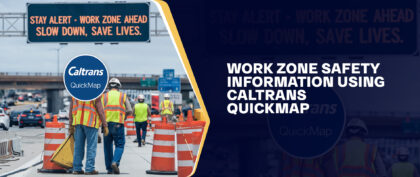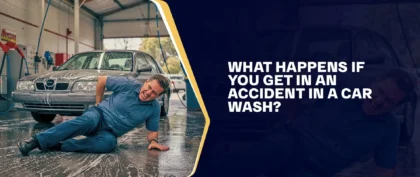Table of Contents
“Micromobility” vehicles such as e-bikes and e-scooters have transformed brief commutes. E-bikes have been fairly popular for many years already. However, electric scooters didn’t quite take off until rental services became available in 2018.
Compared to traditional bicycles, they allow their users to cover more distance with less exertion. These low-cost alternatives to car transportation are eco-friendly and can reach speeds of up to 28 miles per hour. Providing convenience, affordability, and reduced exposure to traffic congestion, these vehicles also feature motors with safer braking capabilities.
Researchers at the University of California — San Francisco have discovered a significant rise in micromobility incidents within urban communities. The use of small electric vehicles, like e-scooters and e-bikes, has increased by fifty times, particularly in congested areas. This growing trend has raised concerns about the safety of these vehicles on busy urban roads.
With the rise in the usage of micromobility vehicles, there has also been an increase in accidents involving e-bikes and e-scooters. Riding a small electric bike or scooter alongside other larger vehicles that drive at much higher speeds poses potential dangers, especially when negligent drivers are involved.
The Growing Trend Of Electric Scooter And Bike Accidents In The United States
Electric scooters and bicycles have been demonstrated to be dangerous despite their advantages. Adrian N. Fernandez, MD, and his team evaluated data from the U.S. Consumer Product Safety Commission’s National Electronic Injury Surveillance System (NEISS), considering the following criteria:
- ER visits related to consumer products.
- Type of injury (blunt, orthopedic, neurological, and dental).
- Region of injury (head, neck, trunk, and extremities).
- Helmet use.
Their study, Electric Bicycle Injuries and Hospitalizations, showed that injuries caused by electric bicycles rose sharply from 751 in 2017 to 23,493 in 2022. The number of injuries caused by e-scooters also increased throughout that time, going up from 8,566 to 56,847. Across the US, the system documented a total of 45,586 e-bike injuries and 189,517 e-scooter injuries. In contrast, traditional bicycles were responsible for 2.5 million injuries, while traditional scooters were linked to 304,000.
Benjamin N. Breyer, chair of the UCSF Department of Urology, emphasizes the need to understand and address safety challenges in micromobility vehicles as they become more integrated into daily life. Studies may have fewer data on electric scooter and bicycle accidents than the actual incidents. The researchers stipulated that their data does not account for those who did not seek medical attention. Additionally, some hospital visits might have been categorized incorrectly, with some being attributed to the vehicle’s conventional counterparts.
Factors Associated With E-Scooter And E-Bike Accidents
The study highlighted several key factors common to the electric scooter and e-bike incidents analyzed, including:
Urban Settings
Researchers found that injuries from both conventional and electric vehicles are more common in urban areas. This trend is primarily attributed to the growing popularity of micromobility vehicles (MMVs) in cities. Many people might use them to commute to school or work instead of driving in congested streets or taking the subway with thousands of other commuters.
The rise of rental services in cities likely contributes to the increasing number of accidents as well. While these platforms make MMVs more accessible to the public, users often lack adequate preparation or education on safe riding practices.
Helmet Use
The study was prompted by low helmet usage among e-bike riders in San Francisco. Fernandez said that seeing this trend got them interested in knowing whether there had been more injuries. This was happening alongside a sharp rise in injuries and hospitalizations associated with these vehicles.
They found that electric vehicle users are less likely to wear helmets, significantly increasing the severity of injuries. This poses a major issue for shared micromobility services. There is no practical way to provide helmets without risking vandalism and theft. Meanwhile, expecting users to bring their helmets is unrealistic, requiring them to carry around bulky and heavy items.
Riding Under The Influence
Another concern the study found is riding under the influence. Data shows that this behavior is more common among electric vehicle (EV) users compared to those who use traditional vehicles.
This trend is particularly prevalent among college students, who make up a significant portion of electric scooter and e-bike riders. Contributing factors include a lack of awareness about the seriousness of riding while intoxicated and misguided beliefs. Many students won’t drive a car while drunk but don’t see an issue with riding a scooter or bike while intoxicated.
Some college students have admitted to already being in e-scooter accidents while riding drunk. Still, they plan to continue for the thrill and fun. “Not that I drink and drive, but I’d much rather get on a scooter than get in a car after drinking,” one student said. “I think it’s not very often that people get hurt by them, but when people get hurt by them, it’s better than crashing into another car or hitting someone with yours.”
Many people also overlook the fact that they can get a DUI citation for riding an EV while intoxicated. In California, for instance, the Vehicle Code specifically makes it illegal to operate e-scooters while under the influence of alcohol or drugs. Another version of this rule applies to traditional and electric bicycles.
Demographic Characteristics
The study found that injuries were common among slightly older participants, with helmet use lower among them. The average age for injured e-bicyclists was 39, compared to 30 for traditional bicyclists. For injured e-scooter users, the median age was 30, as opposed to 11 for traditional scooter riders.
Older adults have unique safety needs and often use electric micromobility vehicles due to their lower barriers to entry, which allow longer travel with less effort. While younger individuals are the primary users of e-scooters and e-bikes, older users who do join the trend are more likely to get injured.
In electric vehicle accidents, African Americans represented 24% of injured e-bicyclists and 25% of injured e-scooter users. These percentages contrast with injury rates in conventional vehicle accidents, where the figures are notably lower, at 11% for bicycle riders and 17% for scooter riders.
Data from the National Association of City Transportation Officials shows that e-scooter users are typically younger men, with 66% to 81% identifying as male and 50% to 73% being under 40.
How Electric Scooter And Electric Bike Accidents Have Evolved Over Time
Electric scooters and bicycles have become a common sight on our roads. However, their initial introduction spurred numerous protests and debates over safety concerns and sidewalk clutter. Many cities started banning these vehicles, citing safety issues and the lack of regulations.
The arrival of sharing services heightened existing issues. Poor implementation, combined with improved accessibility for unprepared riders, led to collisions and injuries. These factors may well have contributed to the culture of accidents we see today. This was evident in the story of one early user who shared her experience using services like Lime, Uber, Lyft, and Bird in Los Angeles.
According to her, the instructions clearly stated not to ride these vehicles on sidewalks, as it was illegal at the time. However, authorities didn’t seem to enforce this rule, often claiming it was allowed. The user herself knew it was illegal. Still, she continued to ride the scooter on the sidewalk. She claimed the streets didn’t look safe, so she had little choice but to prioritize her safety. The instructions also required the rider to wear a helmet, but as the user mentioned, “Who carries a helmet around with them?”
Today, the riding culture and sharing services have made minimal improvements in terms of safety. Although e-scooters have been upgraded with better tires, builds, and safety features, accidents involving these vehicles continue to rise. Helmet usage remains low, and the streets remain unsafe for riders. Injuries and hospitalizations number by the thousands annually, facing an upward trend.
What Are The Safety Risks Of Electric Scooters And Bicycles?
The study did not thoroughly explore the risks associated with using micromobility vehicles. However, many experts, including our scooter and bike accident lawyers, have identified several safety risks, including:
Speed Control
Speed is more controlled on conventional bicycles. Users rely on their kinetic energy to pedal, giving them more control over their pace. This makes it easier to slow down or stop as needed.
However, electric micromobility vehicles provide more speed with just the throttle button. This makes steering tricky because minor adjustments can lead to big changes in direction. The faster speeds also give you less time to react, making accidents more likely.
Malfunctions And Defects
More components increase maintenance and the likelihood of defects. Although conventional models also experience brake failure accidents, their motorized counterparts are more prone to such issues.
Older models had dangerous defects such as brake failure and the throttle getting stuck. These issues can cause the rider to lose control, leading to accidents and injuries. Newer models present fewer problems, but they remain a possibility, especially with the lack of proper maintenance.
Overheating Batteries
Electronic vehicles can also cause burn injuries and other fire-related injuries. There is always a risk of explosions with batteries, especially ones using lithium-ion. Contributing factors include:
- Extreme Temperature — Batteries and e-scooters should not be stored in conditions that can cause batteries to degrade faster and increase the risk of malfunction or even explosion.
- Counterfeit Goods — Batteries are heavily regulated due to their potential risks. Ensure safety by always purchasing them from reputable sellers and trusted brands. Counterfeit batteries likely don’t meet safety standards with increased risk of fire or failure.
- Physical Damage — Batteries can explode if they are dropped, punctured, or involved in a crash.
Geofencing
Geofences are electronic fences set by local authorities or rental companies that mark no-ride and no-parking zones. Electric scooters or bikes that enter a geo-fenced area will slow down or stop.
Theoretically, it is an effective accident prevention method, but it ignores the potential downsides for riders who are supposed to be aware of these areas. The scooter’s app map indicates them as red zones, but sudden slowdowns or stops could cause the rider to lose balance and potentially crash. Pedestrians and drivers around them might also fail to react accordingly, increasing the risk of rear-end accidents and other accidents.
Other risks of geofencing are inaccuracy and inconsistency. The electronic field can affect e-vehicle riders traveling just outside the fence, catching them unaware. In some cases, a shared e-scooter could stop before a red zone, while another unit from a different company could ride on just fine.
Low Visibility
Many e-scooters and e-bikes lack adequate lighting, making it difficult for riders to see obstacles or dangerous road conditions. Additionally, many of these vehicles do not have the required reflectors, making them less visible to other road users.
Poor visibility, especially at night, significantly increases the likelihood of accidents. Motorists already face risks associated with night driving. They might not be vigilant enough to notice EV riders in the dark, which is why lights and reflectors are mandated.
Rubber Tires
Some e-scooter models use solid rubber tires instead of the standard air-filled ones. This feature makes sense in certain areas, but it’s mainly a profit-driven decision for scooter rental companies. Solid rubber tires eliminate the risks of flat or slashed tires, minimizing downtime and reducing maintenance costs. However, these tires have some drawbacks.
Solid rubber tires offer less cushioning than air-filled ones, making rides bumpier and less comfortable. This is especially noticeable on rough or uneven surfaces. The lack of shock absorption makes handling more challenging, increasing the risk of accidents, especially at higher speeds.
Durability
Many early-generation e-scooters were particularly prone to durability issues, such as:
- Loose or detached handlebars.
- Collapsing handlebar posts.
- Baseboards snapping in half.
Older electric bikes, on the other hand, didn’t seem to have similar issues. Modern designs have also improved, but these structural weaknesses remain a concern, specifically with heavy or rough usage.
Inexperience And Lack Of Knowledge
Many users are unfamiliar with the handling and power of electric micromobility vehicles, making them more prone to losing control.
The lack of mandatory licensing for e-bikes carries the risk that riders will not understand the rules of the road. Without formal education or training, some riders may not know the basics, such as right-of-way rules and stop signs. This leads to dangerous decisions, such as running red lights, which can lead to accidents at intersections. Our bicycle accident attorneys have also seen head-on collisions with EV users riding against the flow of traffic.
Driver Error And Negligence
In California, driver error is the leading cause of car accidents. It is also a significant factor in electric scooter and bike accidents. Some examples are:
- Reckless Driving — Weaving in and out of lanes and ignoring traffic signals can lead to dangerous situations for EV riders. Reckless driving accidents involving e-scooters and e-bikes often result in severe injuries to riders, who are more vulnerable due to their smaller size and lack of protective gear.
- Blind Spots — Electric vehicles are quiet and more difficult for motorists to notice. When drivers don’t properly check their blind spots while navigating traffic, they could cause sideswipe accidents. This is also a common factor in parking lot accidents, where drivers are more focused on maneuvering.
- Distracted Driving — Many drivers engage in accident-causing driving distractions such as texting, eating, or checking their GPS. These activities divert attention from the road, increasing the risk of collisions.
- Excessive Speed For The Conditions — Driving at excessive speeds reduces a driver’s ability to react to sudden changes in traffic conditions, heightening the risk and severity of speeding-related accidents. Failure to go slower in bad weather can also be dangerous, potentially leading to skidding and other rain-related accidents.
If you’ve been injured in any of these scenarios, you can rely on our reputable and compassionate car accident lawyers. We will help you obtain maximum compensation against the negligent driver. Don’t wait, don’t delay, contact us today!
E-Bike Modifications
Electric bikes (e-bikes) are designed to enhance the cycling experience by providing comfort and ease of use for riders of all fitness levels. E-bikes make cycling accessible to everyone, including those who may be new to bicycles or have physical limitations. Many users are tempted by the appeal of modifying an e-bike for speed or performance. However tempting it is, one must understand the potential risks and legal implications involved:
- Speed Limit Modifications — The speed limit for e-bikes in the US is 20mph. Bike manufacturers are legally required to install speed limiters on e-bikes. Modifying the speed can lead to legal issues and safety risks, including potential accidents and fines.
- Battery Or Motor Modifications — Upgrading batteries or motors can create overheating risks and damage to the bike.
Modifications can change your e-bike’s classification, potentially making it a moped or motorcycle. These changes can have legal consequences, including penalties and insurance requirements.
So, while e-bikes offer a fantastic way to enjoy cycling with added support, it is crucial to refrain from making unauthorized modifications. Adhering to factory specifications ensures safety, compliance with the law, and the longevity of your bike, allowing you to enjoy a worry-free riding experience.
Riders suffer worse injuries than car occupants in motor vehicle accidents involving scooters and bikes. Our scooter and bicycle accident lawyers have witnessed the severe impact these collisions can have on victims. As such, we offer sound legal representation to riders who fall victim to bicycle accidents.
Typical Injuries Sustained From Electric Scooter And Bike Accidents
Lead author Fernandez stated, “The U.S. had a remarkable increase in micromobility injuries during the study period.” The researchers analyzed injuries and hospitalizations related to electric bicycles, e-scooters, and their conventional counterparts. They found that e-bicycle injuries roughly doubled from 2017 to 2022. Meanwhile, e-scooter injuries rose by more than 45% annually during the same period.
Among the 86,623 individuals they studied, these are the most common injuries:
Head Injuries
Head injuries are a significant concern for e-scooter and e-bike riders, often resulting from a lack of proper helmet use. Many riders sustain direct trauma to the head in a fall or collision. This leads to cuts to the scalp, bumps, and traumatic brain injuries (TBIs).
However, brain injury accidents can also occur even with a helmet on. A collision’s abrupt force can violently jolt the brain against the skull, resulting in a concussion or other forms of TBI. Researchers emphasized the further examination of head injuries. They have found that e-bike riders tend to suffer more severe TBIs compared to traditional cyclists.
Broken Bones
Fernandez’s team also found that broken bones are among the most common injuries in e-scooter and e-bike accidents since riders don’t have enough protection. Riders are likely to fall off their scooters and hit the ground or other objects forcefully, resulting in fractures. Bones could shatter upon impact in high-impact collisions like truck accidents. The wrists are the most vulnerable to injury as riders instinctively use their hands to break their fall. Additionally, the arms, legs, and collarbones are frequently injured in collisions.
Depending on severity, fractures take time to heal and can be very painful. During this period, victims experience reduced mobility, especially if they are in a cast. In some cases, fractures don’t heal properly, potentially resulting in permanent infirmity.
Internal Injuries
Research data also showed that internal injuries were more common among e-scooter riders than among traditional users. The forceful impact of a collision can cause internal hemorrhaging. The heavy impact of being thrown and landing directly on the abdomen can damage vital organs. These injuries are often not immediately apparent and can have severe, even fatal, consequences.
Other Injuries Due To Electric Scooter And Bike Accidents
The study did not detail other injuries, but our lawyers specializing in bike accidents and other experts have identified other common injuries suffered by victims:
Lacerations And Abrasions
Many e-scooter and e-bike users ride wearing their regular clothes, which often provide little to no protection for their arms and extremities. This lack of protective gear makes riders prone to cuts and scratches in the event of a fall. Road rash, an abrasion caused by sliding on pavement, is fairly typical.
Neck And Back Injuries
When a rider is thrown from their e-bike or e-scooter, the sudden jolt can damage the spine and surrounding tissues, leading to whiplash. One can get nerve damage from whiplash when the head is subjected to a violent jolt, causing the neck to jerk violently like a whip. Symptoms can vary widely in severity but typically include neck pain, stiffness, headaches, dizziness, and shoulder discomfort.
Soft tissue injuries are also common. They involve damage to the muscles, ligaments, and tendons in the neck and back. Symptoms include neck and back pain, stiffness, tenderness, headaches, and limited range of motion.
Neck and back injuries can have long-term consequences, including chronic pain, limited mobility, and difficulty with daily activities. In severe cases, these injuries can lead to disability.
Spinal Cord Injuries
A spinal cord injury (SCI) occurs when the spinal cord is damaged, disrupting the communication between the brain and the rest of the body. SCIs are among the most devastating consequences of accidents related to e-bikes. These injuries can result in permanent paralysis and loss of bodily functions. Victims may also experience excruciating pain, respiratory problems, and sensory issues.
Accident victims experiencing any degree of paralysis can talk to qualified paralysis lawyers to see what their options are.
Eye And Ear Injuries
The lack of protective eyewear for riders significantly increases the risk of eye injuries. Objects kicked up by the tires, debris from collisions, and even direct impacts can cause severe damage to the eye.
Ear injuries are less common but can still occur. Victims might develop tinnitus after an accident. It is a condition characterized by a persistent ringing, buzzing, or hissing sound in the ears. Severe impacts can also damage the delicate structures of the inner ear, leading to permanent hearing loss.
Deaths Due To Electric Scooter And Bike Accidents
A recent report from the CPSC highlighted the concerning trend of increasing e-vehicle fatalities. Out of 233 reported micromobility deaths from 2017 to 2022, 111 involved e-scooters, making up nearly 50% of the total. Meanwhile, 104 deaths involved e-bikes, while 18 included hoverboards.
The number of reported fatalities has increased significantly. There were 104 additional deaths recorded in the last annual report alone. Each day seems to bring new reports of tragic incidents:
- In Orange County, CA, an elderly e-bike rider was struck by a motor vehicle.
- An elderly individual died from e-bike crash injuries in Fairfax, Marin County.
- In Carlsbad, a mother succumbed to e-bike accident injuries when a vehicle ran a stop sign and hit the e-bike she was riding with her daughter.
- A man in New York lost control of his e-scooter and was thrown to the pavement, suffering fatal brain injuries.
Unfortunately, these fatal traffic accidents involving electric vehicles are all too common. Our lawyers handling bicycle accident cases have helped many grieving families pursue wrongful death claims for their loved ones killed in various circumstances. We’ve seen many deaths occur due to red light running, driving while distracted, and other forms of accident-causing negligence.
The Effects OF E-Scooter And Bike Accidents On Public Health
Data from the National Inpatient Sample, covering 2016-2020, shows nearly 93,000 hospitalized patients, with 6,100 injuries from scooters. The study found that 27% of scooter injury patients were under 18.
Scooter injuries also resulted in more major surgical interventions compared to bicycle injuries. Orthopedic and plastic surgeries were more common among scooter injury patients. Additionally, scooter riders had higher odds of long-term bone fractures and paralysis.
The study showed the total annual costs for scooter-related hospitalizations increased significantly, from $6.6 million in 2016 to $35.5 million in 2020, a nearly fivefold increase. For bicycle injuries, costs rose from $307 million to $434 million.
Despite some data limitations, the findings reveal a troubling increase in injury severity and associated costs. The study notes the lack of raw data on helmet use, alcohol and drug use, and other factors. However, the overall trend indicates a growing healthcare burden.
These accidents profoundly impact public health, contributing to the strain on the country’s already overwhelmed healthcare system. Emergency rooms, which are often overcrowded, face additional pressure from the influx of electric scooter and bike injury cases. One expert noted that patients are sometimes leaving early, some even dying while waiting for hospital beds.
There have been instances when patients stayed in the ER for weeks or even months while waiting for hospital beds to become available. This situation is especially dangerous for those with compromised immune systems, who are at higher risk of infections and complications. Cases have also been noted where intensive care patients faced delays in getting ICU beds.
If you get injured in an e-scooter or e-bike accident, you might not receive proper treatment right away due to these overwhelming conditions. The nationwide healthcare crisis cannot be solved overnight, but individuals can contribute by taking extra care to avoid preventable accidents.
Who Can I Sue After I Was Injured In An E-Scooter Or E-Bike Accident?
After an accident involving an e-scooter or e-bike, you must identify all potential parties who may be held liable for your injuries. Liability in these cases can be complex, as multiple factors and parties may contribute to the accident.
Here are the key parties you may hold accountable:
E-Scooter Or E-Bike Companies
E-scooters and e-bike companies can be held responsible if their products cause accidents. If a scooter’s battery malfunctions and bursts into flames, or if a design flaw causes the baseboard to break, these issues can lead to serious injuries. For example, software problems that result in sudden braking can cause falls, while sticky throttles can lead to uncontrolled acceleration and crashes.
In states like California, manufacturers are strictly liable for injuries caused by their products, even if they weren’t negligent. So, if an e-scooter or e-bike injury results from a defect, you could be entitled to compensation without needing to prove the company’s negligence.
Rental Companies
If you’ve been injured due to a poorly maintained e-scooter or e-bike, the rental company might be liable for your accident. These companies must ensure their fleet is in good working order to keep riders safe. Some of the common reasons rental companies might be liable are:
- Neglect — Neglect — Failing to inspect and maintain both e-scooters and e-bikes regularly.
- Delayed Repairs — Not fixing known issues or replacing defective equipment in a timely manner.
- User Safety — Allowing unsafe vehicles to remain in circulation without addressing malfunctions.
Rental companies are required to act responsibly and ensure their e-scooters and e-bikes are safe to use. If they neglect these duties and you’re severely injured as a result, you could have a strong case.
Drivers
They may be responsible if their negligent behavior, such as reckless driving or failure to yield, led to your accident. It’s best to consult attorneys who help personal injury victims. They can evaluate the circumstances of your accident, prove the driver’s liability, and help you pursue just compensation for your injuries and losses.
Property Owners
They might be liable if hazardous conditions on their property contributed to your accident. Issues like poorly maintained sidewalks, obstructive debris, or unsafe parking areas can create dangerous situations for e-bike and e-scooter riders. If a property owner fails to address these hazards, they could be held accountable for any resulting injuries.
Government Agencies
If poor road conditions or inadequate infrastructure led to your e-scooter or e-bike accident, a specific government agency might be at fault. If potholes, missing road signs, or poorly designed bike lanes contributed to your crash, the local government where the accident occurred could be held liable. They must ensure that roadways and pathways are safe for everyone.
Depending on the circumstances, you may have six months to 1 year to initiate a claim against the government, so it’s crucial to act quickly. Contact our scooter and bike accident lawyers to ensure your case is handled promptly.
Traffic Rules And Regulations For Electric Scooters And Bicycles
The regulation of electric scooters and bikes has evolved slowly. Cities were initially uncertain about how to integrate them into existing traffic systems, while citizens were unsure of the rules governing their use. This confusion led to a period of adjustment during which the risk of accidents was common.
Yet, even with established laws, many road users are still unfamiliar with micromobility vehicle regulations. People who got their driver’s licenses before e-scooters and e-bikes were widespread may not know the laws. Thus, riders and drivers may not know how to share the road safely, causing accidents and injuries.
Electric scooter and bike users generally follow the same traffic rules and regulations as motorists. This includes obeying traffic signals, yielding to pedestrians, and riding in designated bike lanes when available.
Laws may vary by state and jurisdiction. For example, some states, like Texas, California, and Georgia, require riders to be at least 16. Other states, like Washington, Colorado, and Kentucky, don’t have age restrictions.
Examples Of Traffic Rules And Regulations In California
Here are some examples under California’s Vehicle Code:
- Helmets — Any individual under 18 years old operating a motorized scooter must wear a properly fitted and fastened bicycle helmet that meets safety standards.
- Licensing And Registration — Under the Code, motorized scooters are exempt from insurance, registration, and license plate requirements for motor vehicles. Meanwhile, electric bicycles don’t require a license (although some states do).
- Age — Class 1 and 2 e-bikes don’t have age requirements; e-scooters and Class 3 e-bike riders must be at least 16 years old.
- Speed Limits — Electric scooters have a speed limit of 15 mph.
- Sidewalk Riding — Electric scooters are not allowed on sidewalks unless they’re leaving or entering adjacent property. Meanwhile, e-bikes are generally treated as bicycles and can be ridden on the sidewalk unless otherwise posted.
- Roadway Riding — Electric scooters must take the bike lane on roads with a speed limit of more than 25 mph.
- Left Turns — Riders should dismount on the right-hand curb, then cross on foot.
- Requirements — Both electric scooters and bikes must comply with lighting and reflector requirements.
These actions are usually not allowed:
- Tandem riding.
- Leaving the vehicle on its side on the sidewalk.
- Parking on the sidewalk without leaving adequate space for pedestrians.
Awareness of these rules is important for riders and drivers sharing the road. Our lawyers specializing in bicycle accidents have previously encountered cases where the driver failed to yield the right of way to the cyclist because they did not know they were supposed to.
Effectiveness Of Laws And Regulations In Preventing E-Scooter And E-Bike Accidents
Experts debate whether existing legislation for traditional scooters and motorcycles is adequate to regulate newer vehicles. The rapid growth of e-scooters and e-bikes has outpaced regulations, exposing safety and operational gaps. Customized laws addressing these issues are needed as these vehicles become increasingly integrated into urban contexts.
Additionally, helmet certification requirements may need updating. Only the U.S. Consumer Product Safety Commission regulates bike helmets. Helmets must pass pass-fail tests, which show they can prevent skull fractures and fatal head traumas. Basic protection may not be enough for certain users.
Researchers at the Virginia Tech Helmet Lab published helmet ratings based on real-world, sport-specific data. They study the unique factors involved in head injuries in various situations, such as biking, skiing, horseback riding, and football accidents. Their work is crucial in understanding how people typically hit their heads in different sports and improving helmet design accordingly.
They are now considering publishing ratings specifically for electric bicycle users. These ratings could become the basis of new policies governing the use of proper safety gear specific to the risks posed by micromobility vehicles in various settings.
Safety Innovations In Electric Scooters And Bikes
Advancements in technology are enhancing rider protection and overall road safety. Of course, micromobility safety innovations won’t come close to automated safety technologies for motor vehicles. It won’t have lane departure warning and blind spot detection features as they’re not really applicable. However, as technology continues to evolve, we can expect even more sophisticated safety features like these to emerge:
- Anti-lock braking systems (ABS) and electronic brake force distribution (EBD) to prevent wheel lock-up and improve vehicle control under adverse conditions. Regenerative braking, which converts kinetic energy into electrical energy, also enhances braking performance while extending battery life.
- LED lights enhance visibility in low-light conditions, while some models even feature adaptive lighting that adjusts brightness based on ambient light levels.
- Collision avoidance systems, using sensors and cameras, can detect obstacles and alert the rider.
- Smartphone integration allows for features like GPS tracking, remote locking, and emergency assistance.
- Vehicle design significantly impacts e-scooter and e-bike safety, with features like lower center of gravity, wider wheelbases, improved tire traction, and advanced suspension systems enhancing stability.
The Case For Electric Scooters And Bikes
Electric transportation options, including e-scooters and e-bikes, are one of the top priorities in the battle against climate change, according to the 2021 Glasgow Summit. They have also become popular consumer options because of the following factors:
- Lower environmental impact than cars.
- Affordability.
- Enjoyable transportation option that allows for exercise.
Many people use micromobility vehicles to commute, helping to decongest streets and reduce harmful emissions. Governments worldwide are recognizing these advantages. The US Congress is also reviewing subsidies for electric bicycle purchases, which would increase the number of these vehicles on our roads. In response to measures, experts are calling for the improvement of their respective safety profiles.
Improving Safety For All Road Users
As micromobility options gain popularity for accessibility and eco-friendliness, cities and governmental bodies must prioritize enhancing road user safety. Researchers suggested some ways to harness the benefits of electric vehicles while mitigating their safety risks. Among them are:
Street Redesigns
The rise in electric bike and scooter accidents highlights the need for cities to update their infrastructure to better accommodate these vehicles. UC Berkeley’s research and development engineer Elliot Martin suggested installing protected lanes with physical barriers for micromobility vehicles, not just paint markings.
Alternatively, existing bicycle lanes could be improved to handle the increased number of users. The researchers referenced a study about MMVs, obstructions, and safe rider behaviors in New York City that highlighted the lack of safety on these paths. Approximately a quarter of micromobility users encountered obstructions in bike lanes, forcing them to divert into vehicle traffic lanes.
The goal of dedicated lanes is to minimize MMV interactions with pedestrians and motor vehicles, enhancing overall safety. These lanes must be separated from sidewalks and roads to eliminate encounters with pedestrians and motor vehicles. Additionally, cities must focus on charging and parking infrastructure for these vehicles. This will help resolve haphazard parking and reduce obstructions, promoting safer and more organized urban environments.
Education And Awareness Programs
In light of the research highlighting the importance of helmet use and other safety measures for riders, researchers suggest the implementation of effective strategies to promote these practices. Here are some suggestions to enhance safety awareness and helmet usage:
- Information Campaigns — Launch campaigns that specifically promote the benefits of wearing helmets and riding sober to reduce the risk of brain injuries.
- Targeted Outreach — Focus on specific demographics, such as men, who have been found to be less likely to wear helmets, and develop tailored messaging to engage them.
- Parental Guidance — Educate parents and guardians about the importance of helmet use. Their influence is vital in instilling safe practices in children.
- Community Workshops — Organize workshops that teach safe riding practices, including the proper use of helmets and visibility techniques.
- Retail Partnerships — Collaborate with bike shops to promote helmet safety, ensuring that customers receive education on the importance of wearing helmets and how to choose the right one.
By implementing these strategies, we can foster a culture of safety among riders and significantly reduce the risk of head injuries.
Understanding Of Local Needs
Although widespread improvements and awareness campaigns are needed to improve public safety, researchers hope that policymakers the following local data:
- Local Population Needs And Behaviors — By considering the unique characteristics of different communities, regulations can be tailored to address specific needs and concerns. Factors such as population density, demographics, infrastructure, and existing transportation systems should be carefully analyzed to develop effective micromobility solutions.
- Rider’s Perspective — Feedback from both traditional and electric vehicle users can highlight specific challenges within a given area that might be overlooked in broader studies. This localized data can inform targeted interventions and policy adjustments.
Focusing on community-specific issues can efficiently allocate resources and achieve desired outcomes.
Strict Enforcement
Strict law enforcement helps improve safety measures. However, enforcers focus on motor vehicle violations and often overlook e-scooter and e-bike infractions, encouraging users to continue unsafe practices. A culture of safety is achieved by holding all road users accountable to the same standards. This approach not only deters reckless behavior but also fosters a sense of shared responsibility for road safety. The report also strongly recommended implementing helmet legislation and speed restrictions to avoid injuries and deaths.
How To Avoid E-Scooter And E-Bike Accidents
While e-scooters and e-bikes offer convenience and efficiency, they also pose potential risks. Riders should follow specific guidelines and precautions to minimize accidents and ensure safe streets for everyone.
Preventing Traffic Accidents And Collisions
Here are some safety tips for e-bike and e-scooter users:
- Do a pre-ride check. Look for any issues or damage to the vehicle’s parts, including brakes, handlebars, throttle, lights, and tires.
- Be predictable on the road. Avoid sudden movements and signal your intentions clearly. Use the bell or horn to alert others about your presence.
- Always keep both hands on the handlebars. Avoid carrying something in your hands or on the handlebars, as this could affect your balance and stability.
- Slow down in dangerous road conditions and go around hazards as much as possible. Even a tiny bump on the road can cause you to lose balance.
- Follow traffic regulations and any local laws specific to your electric vehicle. This includes obeying speed limits and respecting right-of-way rules.
- Don’t carry a passenger unless the vehicle was specifically designed to accommodate them.
Preventing Fires And Explosions
Here’s how riders can reduce the risk of fires and explosions:
- Follow the manufacturer’s instructions when charging. Avoid overcharging, and place the vehicle away from flammable or combustible materials.
- Plug your vehicle directly into an electric socket or use appropriate extension leads. Make sure to unplug it once it is fully charged.
- Use manufacturer-approved batteries, chargers, and other parts.
- Store your e-scooter or e-bike in a cool, dry place, especially if you’re not planning to use it for a long time.
- Install heat and smoke alarms where you charge or store your vehicle to detect any potential issues early.
- Register your product for warranties.
- Check for product recalls.
- Do not fall asleep or leave while charging your electric vehicle. It’s important to stay alert in case of a fire.
- Don’t cover chargers or battery packs, which could lead to overheating.
- Avoid leaving your e-scooter or e-bike on pathways, sidewalks, communal areas in buildings, and private property (unless permitted). This could obstruct others and create hazards.
- Dispose of batteries properly. They could catch fire in trash bins and waste centers.
- Refrain from riding without proper safety gear, especially helmets.
- You must not neglect vehicle maintenance, which increases the likelihood of malfunctions.
What To Do In Case Of An E-Scooter Or E-Bike Accident
Accidents involving e-scooters and e-bikes can happen unexpectedly. Whether you’re a seasoned rider or a newcomer, knowing how to respond in such situations is crucial. Here are the steps you need to take:
Ensure Your Safety
If you can, move to a safer place. If you were riding in an unprotected bike lane, move to the sidewalk or another safe area to avoid a possible secondary collision. In the event of a fire, don’t attempt to put it out. Instead, stay away from the area.
Call For Emergency Services
In case of an emergency, like severe injuries, call 911. You can also call the local police for help managing the accident scene. The police will draft an accident report. Note down the reference number/name of the officer; this can be helpful when you try to obtain a copy of the report later.
Document The Scene And Gather Information
After an accident, your safety is foremost on your mind, and you may not think about documenting the situation. The information is relevant when you make an injury claim. If possible, take photos and videos of the scene, the damage to your vehicle, the road conditions, and the other parties involved. Exchange information with anyone involved in the accident, including witnesses. Record the license plate numbers and descriptions of any vehicles involved.
Seek Medical Attention
Even if you feel okay after an accident, you should still get checked by a qualified medical professional. Some injuries, such as concussions or internal bleeding, may not be immediately apparent. Delayed treatment can worsen these conditions.
Preserve Evidence
If your micromobililty vehicle was damaged, don’t get it repaired just yet. However, you might want to contact the manufacturer about the possibility of the battery getting damaged, in which case you’ll have to dispose of it properly. If you suspect a malfunctioning or defective part caused the accident, document it with photos and videos. This evidence will be vital if you decide to pursue a product liability claim.
Contact Electric Scooter And Bicycle Accident Lawyers
If your injuries are severe or if someone else’s negligence caused the accident, consider consulting with an electric scooter and bicycle accident lawyer. They can guide you through the legal process, help you understand your rights, and represent your interests in a personal injury case.
Frequently Asked Questions (FAQs)
What Is An E-Bike?
An e-bike, short for electric bike, combines the traditional features of a bicycle with the added benefit of an electric motor. This motor provides more power and speed, making it easier to go up hills and over long distances. Essentially, it offers a blend of manual pedaling and motorized support.
E-bikes have gained popularity among eco-conscious adults and experienced cyclists. They are a practical option for commuting and running errands without relying on gas-powered vehicles. As part of bike-share programs, e-bikes help reduce urban traffic and promote sustainable transportation.
Despite their advantages, e-bikes come with certain risks. Riders are often vulnerable on roadways due to the lack of protective gear and safety measures. However, it is important to note that e-bike accidents are rarely the rider’s fault, emphasizing the need for better infrastructure and safety measures.
What Is Safer: An E-Bike Or E-Scooter?
Statistically, there are more bicycle-related injuries due to higher usage. The majority of micromobility-related injuries result in emergency department treatment and release. E-scooter users were slightly more likely to be treated and discharged compared to e-bike and bicycle users. However, the difference was minimal.
Battery-related fires were rare but happened slightly more among e-scooter users. 2021 and 2022 data showed fatalities were rare across all micromobility modes, with cyclists showing a slightly higher proportion compared to e-bike and e-scooter users.
Do E-Scooters Cause More Severe Injuries Than Other Micromobility Modes?
No. According to data from the U.S. Consumer Product Safety Commission NEISS, bicycles cause the most injuries (11,911), followed by e-scooters (1,166) and e-bikes (655).
E-scooters, on the other hand, contribute to a relatively smaller number of injuries compared to bicycles and e-bikes. However, it’s important to note that while the overall injury count for e-scooters is lower, the severity of injuries can vary based on factors such as speed, rider behavior, and helmet use. The lower injury count for e-scooters does not necessarily mean they are less dangerous but rather that they currently account for fewer incidents in the broader context of micromobility options.
Are Batteries In Electric Scooters Safe?
Battery safety in electric scooters is a critical concern for many riders. Overcharging can lead to overheating and potential fire hazards, so it’s best to unplug batteries once they are fully charged. Thankfully, most modern electric scooters feature a Battery Management System (BMS) to prevent such incidents.
Research and advancements in battery technology have significantly improved the safety of electric scooter batteries. The BMS in many scooters continuously monitors the battery’s state, preventing overcharging, overheating, and short-circuiting. This system helps mitigate the risk of fires and ensures a safer charging process.
How Often Do E-Bike And E-Scooter Fires Occur?
While there are no comprehensive statistics on how often e-bike or e-scooter fires occur, they are becoming increasingly common. In New York City, fire incidents involving these micromobility vehicles have surged, from just 13 in 2019 to over 130 in 2022. These fires have resulted in the tragic loss of five lives and numerous injuries.
How To Deal With An Electric Scooter Or Electric Bike Battery Fire
To prevent fires, always follow the manufacturer’s instructions when using and charging your electric scooter or bike. However, despite taking all precautions, fires can still happen. If you ever find yourself in such a situation, follow the steps below to stop the fire and ensure your safety:
- Stay Calm And Assess The Situation — Quickly assess the severity of the fire. Alert everyone nearby and make sure they move to a safe distance.
- Turn Off The Power — If it’s safe, turn off the power to the electric scooter or bike. This helps prevent additional electrical sparks and may reduce the fire’s intensity.
- Use The Right Fire Extinguisher — Grab a Class D fire extinguisher designed specifically for lithium battery fires. Aim the nozzle at the base of the fire and use a sweeping motion to discharge the extinguisher until the fire is extinguished.
- Smother The Flames — If you don’t have a fire extinguisher handy, use sand, dirt, or a fire blanket to smother the flames. Avoid using water, which can react with the battery and potentially worsen the fire.
- Call Emergency Services — Provide detailed information about the incident and your location to ensure prompt assistance.
- Evacuate The Area — Ensure everyone has evacuated the area to avoid inhaling harmful fumes from the burning battery. Move to a safe distance and wait for emergency responders to arrive.
- Monitor For Reignition — After the fire appears to be out, keep a close watch on the area for any signs of reignition. Lithium battery fires can reignite due to residual heat or damaged cells, so stay vigilant.
- Dispose Of The Battery — Once the fire is fully extinguished, follow local regulations for disposing of the damaged battery. Contact your local hazardous waste disposal facility for proper guidance.
How Long Will A Personal Injury Claim Or Lawsuit Take After An E-Bike Or E-Scooter Accident?
The length of a personal injury case varies significantly. Several factors can influence the timeline, including the severity of your injuries, the complexity of the case, and the cooperation of the opposing party. From medical treatment and investigation to negotiation and a potential trial, the process can take months or even years. No matter how long it takes, our injury attorneys will aggressively pursue your claim and maximize your compensation.
Who Can Sue For Personal Injury After An E-Bike Or E-Scooter Accident?
In California, anyone can file a personal injury case regardless of personal circumstances. A person’s race, age, gender, or immigration status does not affect an individual’s right to seek compensation for injuries. This means that if you’re an undocumented immigrant injured in an accident, you are eligible to file a personal injury lawsuit. However, it’s essential to consult with an attorney who specializes in personal injury law to understand the specific regulations in your state and how they might affect your case.
Our personal injury lawyers are committed to helping clients from all backgrounds. If English is not your first language, we can arrange for interpreters to be on the line during any conversations related to your case. If necessary, we can also provide translators to accompany you to medical appointments, depositions, or court hearings.
Injured In An Electric Scooter Or E-Bike Accident? Our Injury Lawyers Can Help
Injured in an electric scooter or bike accident? Arash Law, one of the biggest personal injury law firms in California, is here to advocate on your behalf. Severe injuries from such accidents can lead to significant challenges, making it crucial to have a skilled accident lawyer on your side.
Led by Arash Khorsandi, Esq., our lawyers for personal injury victims will work tirelessly to build a strong case against the at-fault party and secure fair compensation for your injuries and damages. Our accident lawyers have extensive experience handling cases where insurance companies refuse to pay what you deserve, and we know how to navigate the complexities of your situation.
If you’ve been injured in one, don’t wait — call us at (888) 488-1391 today. Our injury lawyers have secured over $750 Million in settlements and court awards, demonstrating our commitment to achieving the best outcomes for our clients.
We proudly serve clients across California, including major cities such as Los Angeles, San Francisco, San Diego, Sacramento, San Jose, Fresno, Bakersfield, Oakland, Anaheim, Beverly Hills, Santa Barbara, Long Beach, Irvine, Santa Rosa, and Malibu.

















































